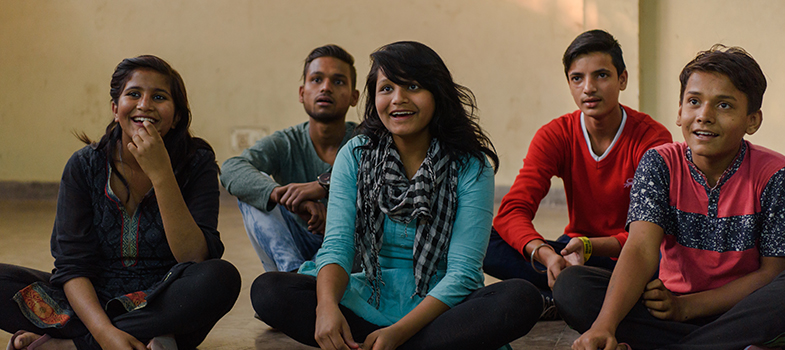1.4 Being ‘positive’
We now turn to look at how a positive approach to teaching young people about their sexuality can provide them with happier, more fulfilled lives.
Activity 1.5: What does ‘being positive about young people’s sexuality’ mean to you?
The International Planned Parenthood Federation (IPPF) framework for CSE identifies sexual pleasure as one of the seven essential components of CSE. The framework says that sexual pleasure starts with ‛being positive about young people’s sexuality’.
In the speech bubbles below, write a word, phrase or sentence that describes what ‘being positive about young people’s sexuality’ means to you. This could be something about the messages you give, the way you treat young people, or how you behave with them.
Discussion
It’s important to really think about how you approach teaching young people about their sexuality. Here’s what Hans, one of our writing team wrote:
Being positive about young people’s sexuality involves respecting them as sexual beings – in their thoughts, fantasies, questions and experiences.
Experiences can include being in love with an idol or secretly with a class mate, fantasising about a person and the sexual acts you might like to do with them, and exploring your body with a friend, or even being sexually active with someone.
Part of this positivity is taking young people’s questions seriously and trying to answer them in a supportive and non-judgemental way. A positive approach sees young people as competent and capable persons. But they need knowledge and support.
It’s also about realising that a lot of young people have been engaged in some form of sexual activity by age 13, like playing 'truth or dare', exploring each other or touching themselves/masturbation.
Further thoughts
Do abstinence-only programmes work?
Programmes that promote abstinence-only have been found to be ineffective, not only in delaying when young people start having sex, but also in reducing the frequency of sex or reducing the number of sexual partners.
Programmes that combine a focus on delaying sexual activity with content about contraceptive use are more effective (Kirby, 2007; Underhill et al., 2007; Fonner et al., 2014).
Some young people choose to abstain from sexual contact with other people. This is a valid choice and should be respected, but abstinence as a message in CSE doesn’t work, as it excludes those who have already had sex with a partner.
1.3 Risk-based versus positive approaches
